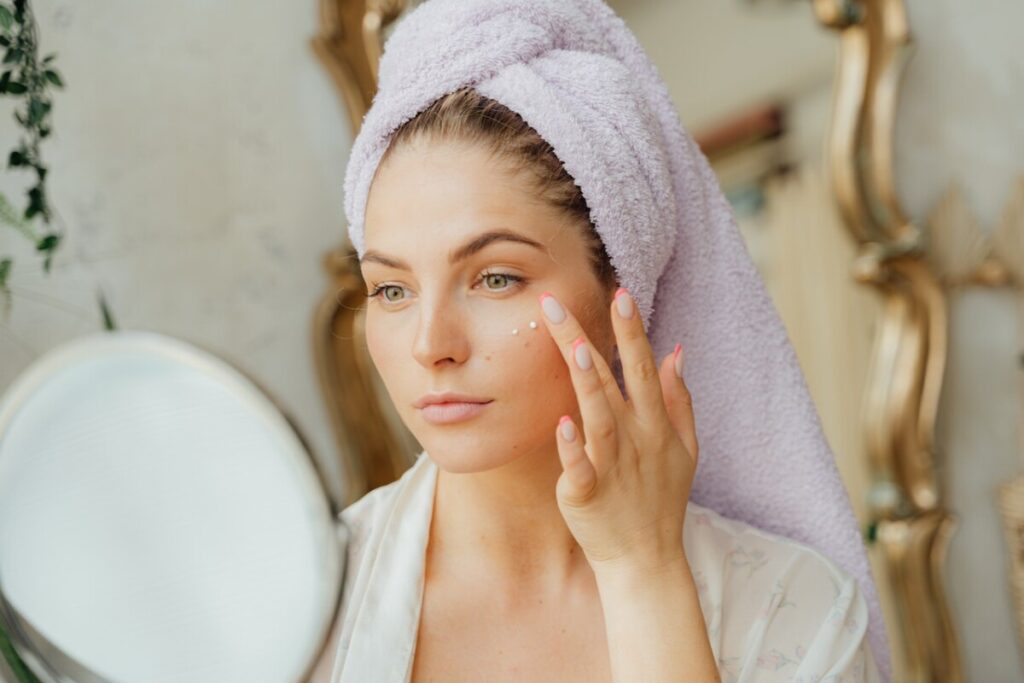Moisturizers play a crucial role in our skincare routine, providing hydration and nourishment to keep our skin supple and smooth. However, what if your trusted moisturizer is causing unwanted breakouts and acne? In this revealing guide, we’ll explore the potential reasons why your moisturizer might be contributing to acne-prone skin. Let’s unravel the mystery and empower you to make informed choices for a clearer, healthier complexion.
The Hidden World of Comedogenic Ingredients
Comedogenic ingredients are substances that have the potential to clog pores, leading to the formation of acne. While moisturizers are meant to hydrate and protect the skin, certain ingredients can have the opposite effect. Explore common culprits like mineral oil, cocoa butter, and coconut oil, which may have a higher comedogenic rating and can trigger acne in susceptible individuals. Learn to decipher ingredient labels and opt for non-comedogenic or oil-free moisturizers to minimize the risk of breakouts.
Balancing Moisture and Sebum Production
Maintaining a delicate balance between moisture and sebum production is essential for healthy skin. Overly rich or heavy moisturizers can create an imbalance, especially for those with oily or acne-prone skin. Dive into the world of lightweight, oil-free, and gel-based moisturizers that provide hydration without overwhelming the skin. Look for formulas that are specifically designed to address acne-prone skin concerns and promote a balanced complexion.

Sensitivity and Irritation
Sensitive skin types are prone to react to certain ingredients found in moisturizers, leading to irritation, redness, and acne flare-ups. Fragrances, dyes, and harsh chemicals can exacerbate skin sensitivity and trigger breakouts. Opt for fragrance-free, hypoallergenic, and dermatologist-tested moisturizers to minimize the risk of irritation. Additionally, patch testing new products before incorporating them into your routine can help identify potential triggers for your acne-prone skin.
Inadequate Cleansing and Moisturizer Buildup
Proper cleansing is essential to remove dirt, impurities, and excess oils from the skin. Failure to adequately cleanse the skin before applying moisturizer can result in a buildup of product, leading to clogged pores and acne. Ensure you cleanse your face thoroughly twice a day and follow up with a gentle toner to prepare your skin for moisturizer absorption. Remember, a clean canvas allows your moisturizer to work effectively without causing unwanted breakouts.
Adjusting Your Moisturizer for Changing Needs
As our skin changes with time, so do its needs. Your go-to moisturizer may have been suitable in the past, but it’s essential to reassess its compatibility with your current skin condition. Factors such as hormonal fluctuations, seasonal changes, or lifestyle adjustments can impact your skin’s moisture levels and susceptibility to acne. Consider consulting a dermatologist to evaluate your skincare routine and recommend suitable moisturizers tailored to your evolving needs.
While moisturizers are meant to nurture and protect our skin, it’s important to be mindful of their potential impact on acne-prone skin. By understanding the underlying causes and making informed choices, you can find a moisturizer that supports a clearer complexion. Remember to prioritize non-comedogenic, lightweight, and skin-sensitive formulations. Embrace the power of knowledge and empower yourself to make skincare decisions that promote a healthier, acne-free visage.
